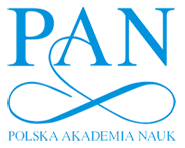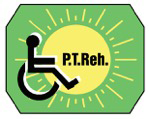


|
Current issue
Archive
Manuscripts accepted
About the journal
Editorial board
Reviewers
Abstracting and indexing
Contact
Instructions for authors
Publication charge
Ethical standards and procedures
Editorial System
Submit your Manuscript
|
abstract:
Original article
Sensorimotor versus core stabilization home exercise programs following total knee arthroplasty: a randomized controlled trial
Ebru Gülek Karadüz
1, 2
,
Riza Emrah Demirbaş
3
,
Ayça Yağcioğlu
4
,
Şule Badıllı Hantal
4
1.
Istanbul Medipol University, Department of Physiotherapy and Rehabilitation, Graduated School of Health
Science, Istanbul, Turkey
2.
Vocational School of Health Services, Osmangazi University, Eskişehir, Turkey
3.
Tuzla Gispir Hospital, Orthopeadics and Traumatology, Istanbul, Turkey
4.
Yeditepe University, Health Science Faculty, Physical Therapy and Rehabilitation Department, Istanbul,
Turkey
Advances in Rehabilitation
Online publish date: 2024/03/22
View full text
Get citation
ENW EndNote
BIB JabRef, Mendeley
RIS Papers, Reference Manager, RefWorks, Zotero
AMA
APA
Chicago
Harvard
MLA
Vancouver
Introduction
Although total knee arthroplasty (TKA) is a frequently performed surgery, a standard rehabilitation approach has not yet been established. The study aimed to investigate the effects of sensorimotor and core stabilization exercises on proprioception, range of motion, balance, and function following TKA. Material and methods This randomized trial was conducted with 40 female patients (69.38 ± 5.81 years) undergone unilateral TKA. Participants were randomly allocated to either the sensorimotor group (N = 20) or core stabilization group (N = 20). Patients performed exercise programs over 6 week between second and eighth weeks postoperatively. Proprioception, knee and hip range of motion, Knee Injury and Osteoarthritis Outcome Scale, Berg Balance Scale, Timed Up and go test, and 5-times sit-to-stand test were measured on three separate occasions: preoperative (E0), before treatment (E1), and after treatment (E2) during postoperative rehabilitation. Results A statistically significant improvement was found in both groups for all outcomes between E1 and E2 (p < 0.05). However, the difference between the groups was found only in the KOOS-sportive recreational activities (p < 0.001), favoring the sensorimotor group. Additionally, the treatment programs provided recovery of knee and hip ROM and proprioception (p < 0.05). Conclusions Core stabilization exercises are effective for improving balance, proprioception, function, and ROM; however, sensorimotor exercises are more effective in the acquisition of sports and recreational activities. Both programs contribute to improvement in rehabilitation through non-operated extremity. keywords:
Functional Performance, Knee, Rehabilitation, Replacement, Arthroplasty |
    |